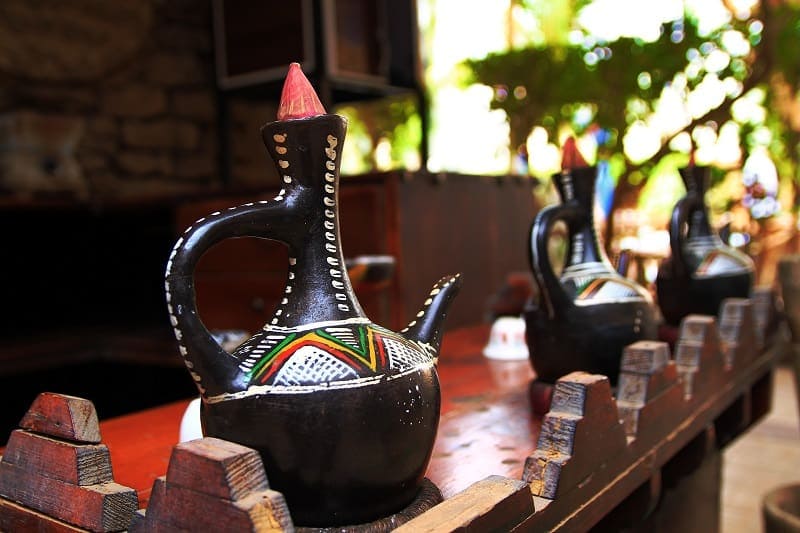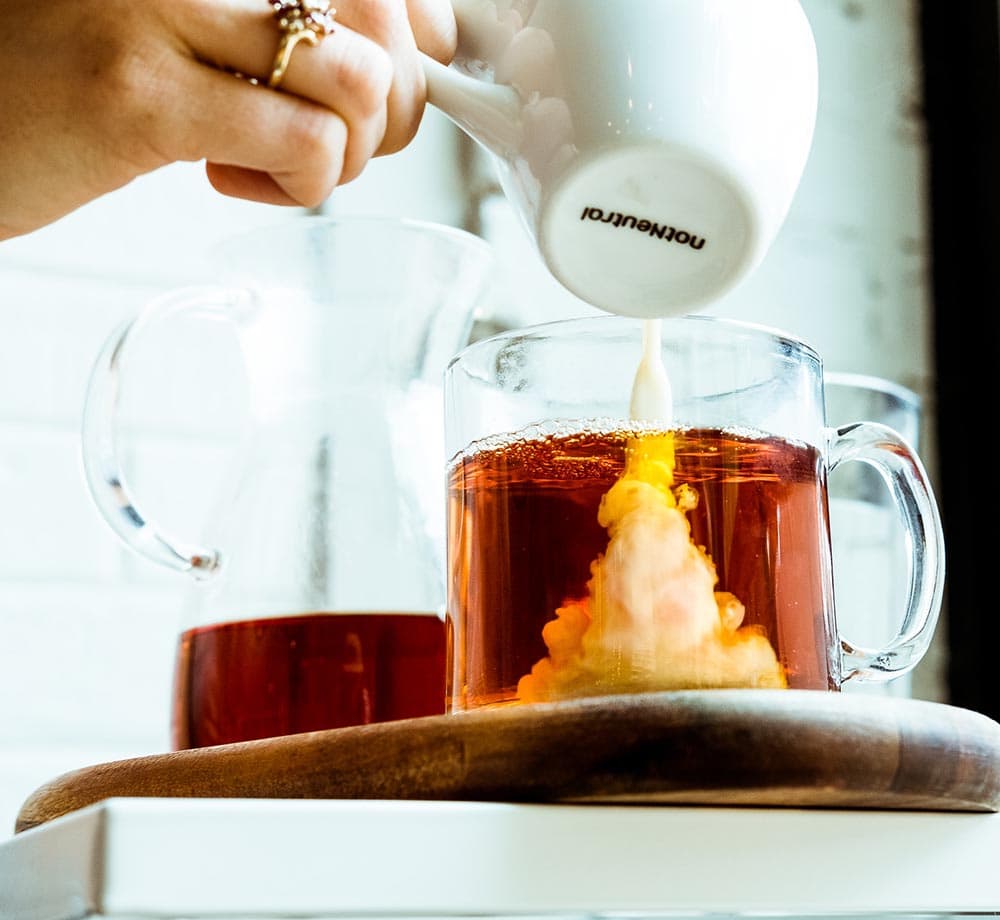
While it is difficult to be 100% sure, there is considerable evidence that coffee originated in the region of Africa in present-day Ethiopia. Attempting to trace the roots of something as old as coffee is bound to be complicated by the conflation of fact and fiction as stories pass from one generation to the next.
The story goes that untold years ago, a goat herder named Kaldi was tending to his goats when he noticed that some of them displayed increased energy and vigor after consuming the cherry from a particular bush. He brought the fruit back to his village and thus began the long history of coffee. We won’t make any claims about the veracity of this story, but we think it is fittingly romantic as the origin story for something as larger-than-life as coffee.
In this article, we’ll trace the Ethiopian coffee history and, in so doing, the history of coffee itself. We conclude with an overview of modern Ethiopian coffee and some brief brewing recommendations.

Early History: Where Was Coffee Discovered?

Experts believe that coffee was discovered sometime during the ninth century, making it almost 1,000 years old. Coffee consumption almost certainly began as food with people eating the cherries and their seeds and experiencing the stimulating effects of caffeine. It was likely later that the modern brewing process was developed with people taking their direction from the much older tea tradition.
There is some evidence that the first steps towards modern coffee were taken in the form of grinding coffee beans into a thick paste that could be easily packed and carried by travelers. Word of mouth and trade of this paste was responsible for the eventual spreading of coffee from Africa outward to the rest of the world.
As the popularity of these energizing beans grew, coffee as we know it began to take shape, first as a fermented wine-like drink. It is unclear precisely when coffee beans started being roasted and brewed as they are today, but historians’ best guess is sometime during the 13th century. It is commonly said that Ethiopian coffee is boiled, but in reality, this is an inaccuracy. Boiled coffee started as an Islamic ritual near Turkey after coffee had spread to the region from its Ethiopian origins.
Interestingly, there is some speculation that the phrase “coffee bean” originated from an English mispronunciation of the words “Kaffa” – the region where coffee is thought to have originated – and “bunn,” the local language’s word for coffee. Thus “Kaffa bunn” became “coffee bean.” Of course, this type of etymology is difficult to nail down precisely, but the similarities in the phrasing are striking.
Modern Ethiopian coffee

Today, coffee is still a major part of the Ethiopian culture and economy. Coffee is Ethiopia’s number one export and has been for many decades. Recently, the fair-trade movement to ensure fair compensation for coffee farmers has taken hold in Ethiopia after many years of hardship.
Ethiopian coffee is known for being bright and fruity with relatively high acidity. They typically are medium or light-bodied, although how you brew the coffee has a dramatic effect on the body. Not all Ethiopian coffee is the same. Many sub-regions share general characteristics but also have distinct qualities that range from powerfully fruity to lightly floral and almost tea-like.
Perhaps the most well-known Ethiopian coffee comes from the Southern region of Yirgacheffe. Coffee from Yirgacheffe has a distinctly fruity flavor profile that comes from a combination of the high altitude it’s grown at and washed processing. If you want to try Ethiopian Yirgacheffe, we recommend looking for wet-processed coffee with a light or medium roast level. Over-roasted coffee masks a bean’s natural flavor and is something you want to avoid when you splurge for an expensive Yirgacheffe.
Brewing Ethiopian coffee
We like to brew Ethiopian coffee in a pour-over brewer like the Hario V60 or Chemex. Pour over excels at accentuating a coffee’s acidity and fruity-tasting notes, something Ethiopian coffee is usually packed with.
We’ve already mentioned that we prefer light roasts when buying Ethiopian coffee, and that’s because Ethiopian coffee, a pour-over, and a light roast all blend together harmoniously since they are all “on the same page,” if you will. Pour overs bring out floral and citrusy notes, which both light roasts in general and Ethiopian coffee specifically are known for.
If you’re looking for a single recommendation for dipping your toes in the pool of Ethiopian coffee – and you’re willing to spend a bit more than usual – we highly recommend picking up a bag of lightly or medium-lightly roasted Yirgacheffe. Some of the best coffee we’ve ever had has been this combination brewed with a Hario V60, and we’ve tried a lot of coffee.

Final Thoughts
While the story of Kaldi might be a bit of an exaggeration, calling Ethiopia the birthplace of coffee is not. Coffee was originally native only to a relatively small region in Africa and spread to become the global phenomenon it is today from trade between early travelers.
Today, Ethiopia thrives on its coffee production, and recent movements are helping secure coffee farming as a viable means of making a living for Ethiopians. Ethiopian coffee is unique, even among African coffee, and is completely different from Central and South American coffee. If you’ve never tried Ethiopian coffee, we cannot recommend coffee from the Yirgacheffe region highly enough. It is fruity, complex, brightly acidic, and an excellent example of what Ethiopian coffee is all about.
RELATED READS:
- What’s the Best Coffee Country in the World?
- All About Madagascar Coffee
- Which Country Drinks the Most Coffee?
Featured Image Credit By: Cameron Whitman, shutterstock















